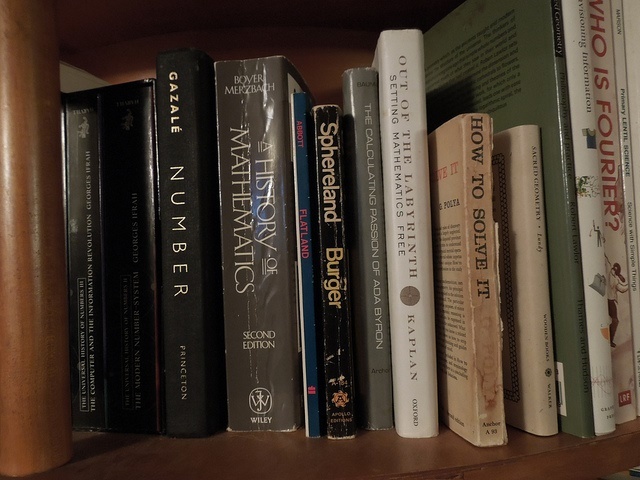Purveyors of the inquiry-based and student-centered math agenda, which has persisted for more than 20 years, argue traditionally taught math has never worked for the vast majority of the nation’s student population, and they say mental math is the key to “understanding,” as opposed to what they consider to be rote procedures.
The mantras of “students shall understand” and “explain” appear in the Common Core standards and are, according to Tom Loveless of the Brookings Institution, “dog whistles” that serve as a signal to proponents of the inquiry-based and student-centered math agenda to see Common Core’s math standards as requiring those approaches.
It is ironic how inquiry-based math approaches seem to spend more time showing students strategies they might discover on their own than on teaching the standard algorithms they almost certainly won’t learn on their own.
The analytic, problem-solving, and critical-thinking capabilities inquiry-based math proponents tout as the stated goal of Common Core only develop after students master facts and procedures. Understanding works in tandem with procedural fluency, but the current emphasis on conceptual understanding places the cart before the horse. Proponents of inquiry-based math point to students’ procedural fluency as evidence “they can do it but they don’t know what they’re doing,” but the reality is the students cannot do the math if they do not master the procedures.
Once Is Never Enough
The inquiry-based thinking that dominates interpretation of the Common Core standards holds one indication of “understanding” is if a student can solve a problem in multiple ways. Thus, the proponents of inquiry-based math insist on having students come up with more than one way to solve a problem. Forcing students to think of multiple ways to get the same answer, however, does not in and of itself cause understanding. It is as if the reformers are saying, “If we can just get them to do things that look like what we imagine a mathematician does, they will be real mathematicians.”
In my experience, and that of many math teachers I know, delays in understanding are normal and do not signal a failure of the teaching method. Students learn to do something; they learn to apply what they’ve mastered; they learn to do more; they begin to see why; and eventually the light comes on. The inquiry-based math community fails to understand that what they deride as “procedures devoid of meaning” is hard to accomplish with elementary math because the very act of learning procedures is itself informative, and the repetitious use of them conveys understanding to the user. Placing the cart before the horse by insisting on “deeper conceptual understanding” prior to teaching standard algorithms and procedures is simply not effective.
Standard Procedures Delayed
Unfortunately, the Common Core math standards delay the teaching of standard algorithms for addition and subtraction, as well as other key operations. The standard algorithm for multi-digit addition and subtraction does not appear until the 4th grade.
It’s important to note Common Core does not prohibit the teaching of the standard algorithms prior to the grade level in which they appear in the standards. This has been confirmed by the lead writers of the Common Core math standards, Jason Zimba and Bill McCallum. Zimba recommends the standard algorithm for addition and subtraction be taught sooner. Zimba would introduce the standard algorithm for addition late in 1st grade, with two-digit addends. He would then increase the complexity of its use in subsequent grades, continually providing practice toward fluency. The goal would be complete fluency by 4th grade. Zimba also would introduce the subtraction algorithm in 2nd grade and increase its complexity until 4th grade.
Despite admonitions from those in the know, such as Zimba, the word does not seem to have reached school districts, administrators, policymakers, publishers, or test makers. Nor do such recommendations appear in the Common Core background discussion on its website.
Morgan Polikoff, assistant professor at the University of Southern California’s Rossier School of Education, was quoted in a recent article in The Florida Times-Union, and his comments show the widespread disdain for teaching the standard algorithms.
“Common Core … put[s] the algorithm last and the conceptual understanding first,” Polikoff said. “They want you to understand how the tool works before they give you the tool. If you understand the concepts, then when you get to higher levels of math problems, you’ll be thinking like a mathematician and you can do it.”
Such thinking manifests itself in many schools and school districts where teachers have gone so far as to issue warnings to parents not to teach their children the standard method at home because it would interfere with the student’s learning. Many parents are choosing to ignore such warnings. More power to them.
Barry Garelick ([email protected]) has written extensively about math education in various publications, including The Atlantic, Education Next, Educational Leadership, and Education News. He recently retired from the U.S. Environmental Protection Agency and is teaching middle and high school math in California. Garelick is the author of Teaching Math in the 21st Century, which recounts his experiences as a long-term substitute in a high school and middle school in California.
Image by thekirbster.





